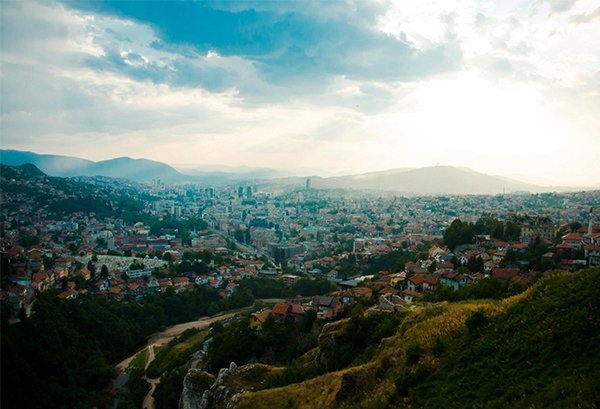When Sarajevo emerged from four years of siege and shelling, the city was almost derelict. Much of its housing had been destroyed and its historic buildings damaged. Only about a fifth of its water system and power supply still worked. Tens of thousands of people had fled and its centuries old history as a cosmopolitan multi-ethnic, multi-faith city was over.
Twenty years after the Dayton Accords that ended the war in 1995, the city is rebuilt and there is little visible evidence of the war. But it is a very different city from before the war and the process of reconstruction has not fully mended the varied tapestry of urban life. Cities are much more than buildings. They are complex cultural systems that are most successful when they are tolerant, open and inclusive. They need economies that sustain them but they also need culture, popular engagement and government that genuinely reflects the will of the people.
Sarajevo has lagged behind in all of that. Government in Bosnia-Hercegovina is corrupt and regarded with dismay by most citizens. The economy was criminalised by war and has never recovered. The triple transition – from war to peace, communism to democracy, a centralised economy to a market system – remains incomplete or distorted. Money was pumped into repairing buildings but little was spent on developing a system to manage the city effectively.
Aleppo will likely eventually face a similar triple transition and although every war is different and every city unique, there is much than can be learned from Sarajevo’s experiences. The Aleppo Project’s detailed report can be found here. It is the first a series that will examine the ways in which cities recover from conflict. We’ll also be looking at Beirut and Kabul shortly and others will follow. We are also posting on the blog what we think are the lessons from this city. We’d welcome your responses and thoughts on how relevant these experiences are likely to be to the recovery of Syrian cities.
See the full report “Rebulding Sarajevo” here
 The Aleppo Project
The Aleppo Project